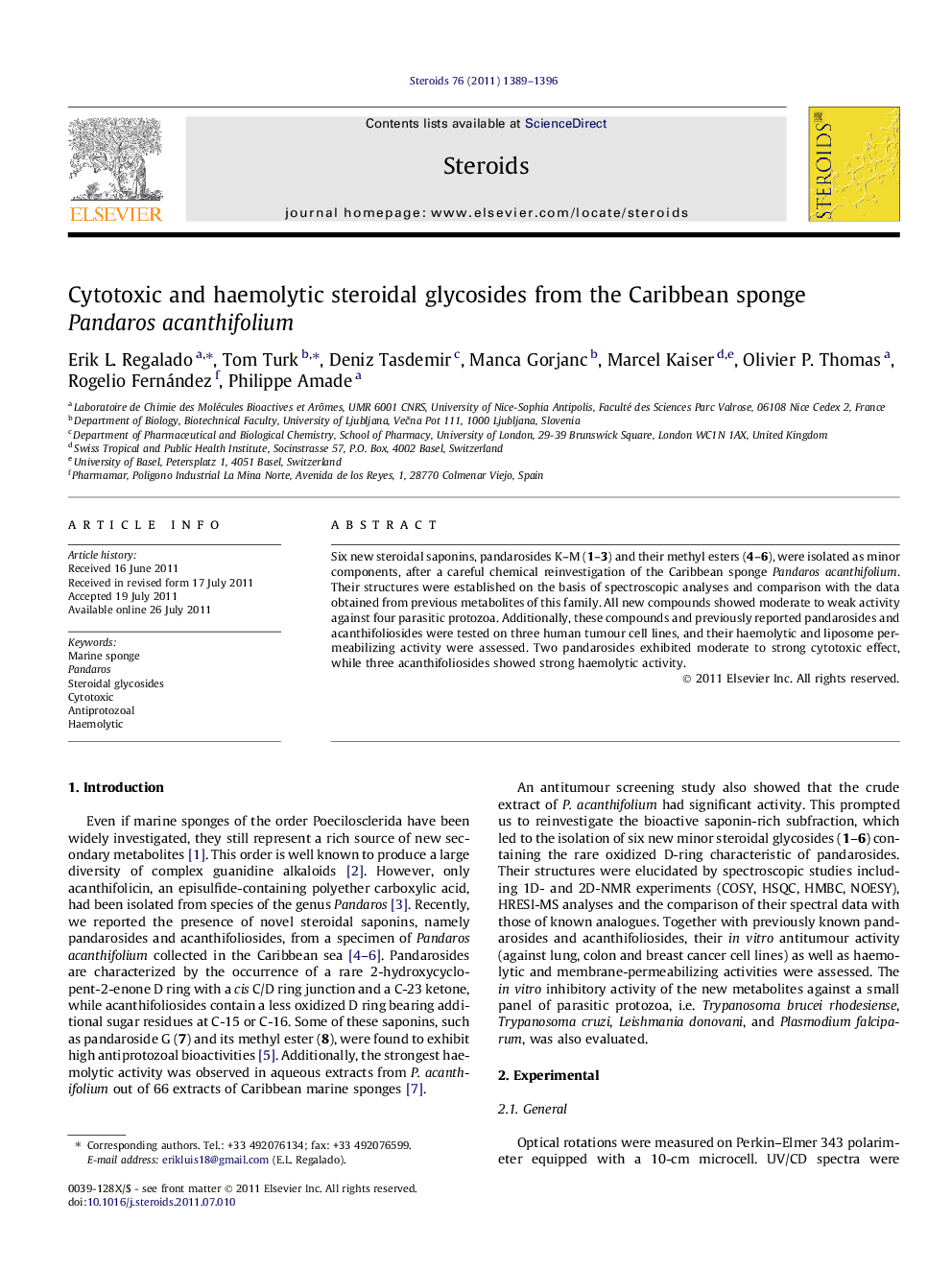| Article ID | Journal | Published Year | Pages | File Type |
|---|---|---|---|---|
| 2029320 | Steroids | 2011 | 8 Pages |
Six new steroidal saponins, pandarosides K–M (1–3) and their methyl esters (4–6), were isolated as minor components, after a careful chemical reinvestigation of the Caribbean sponge Pandaros acanthifolium. Their structures were established on the basis of spectroscopic analyses and comparison with the data obtained from previous metabolites of this family. All new compounds showed moderate to weak activity against four parasitic protozoa. Additionally, these compounds and previously reported pandarosides and acanthifoliosides were tested on three human tumour cell lines, and their haemolytic and liposome permeabilizing activity were assessed. Two pandarosides exhibited moderate to strong cytotoxic effect, while three acanthifoliosides showed strong haemolytic activity.
Graphical abstractSix new steroidal saponins, pandarosides K–M (1–3) and their methyl esters (4–6), were isolated from the Caribbean sponge Pandaros acanthifolium as minor components, and together with previously reported pandarosides and acanthifoliosides were tested against four parasitic protozoa, on three human tumour cell lines, and their haemolytic and liposome permeabilizing activity were assessed. Pandarosides showed the best antiprotozoal and cytotoxic profiles without haemolytic effect, while acanthifoliosides exhibited a strong haemolytic action.Figure optionsDownload full-size imageDownload as PowerPoint slideHighlights► Full chemical characterization of six new pandaroside saponins. ► Biological screening for their in vitro antitumour, antiprotozoal and haemolytic activity. ► All mentioned biological assays on pandaroside analogues, as well as acanthifolioside saponins. ► Valuable SARs for this class of compounds.
